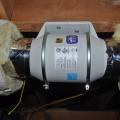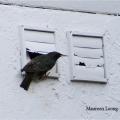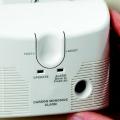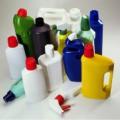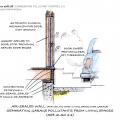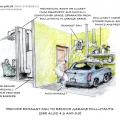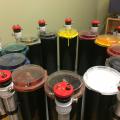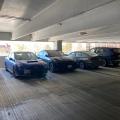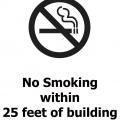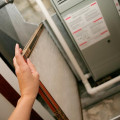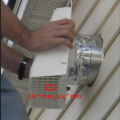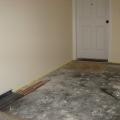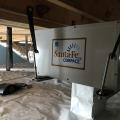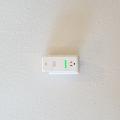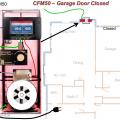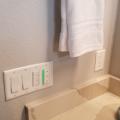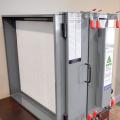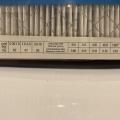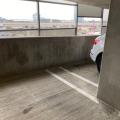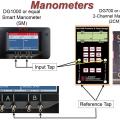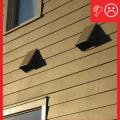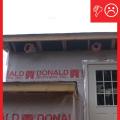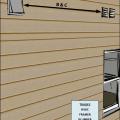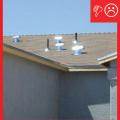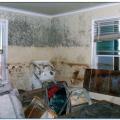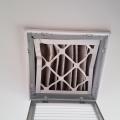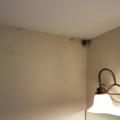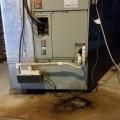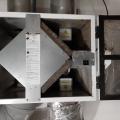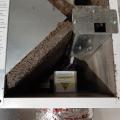Showing results 1 - 50 of 56
A Corsi-Rosenthal Box is a highly effective DIY air cleaner made of easy to obtain materials such as HVAC filters, a box fan, cardboard, and tape
An in-line exhaust fan supplements the ability to exhaust moisture-laden air and lint from a dryer
Equipment needed to pressure test the airtightness of walls separating the house from an attached garage
Gas sensors are used for gas leak detection and carbon monoxide detection
Install a self-closing door with weatherstripping and thoroughly air-seal the shared house-garage walls to help keep automobile exhaust and other pollutants out of the home.
Installing a garage exhaust fan is one important step in keeping auto exhaust and other pollutants out of the home
Mechanical exhaust is not required in this shared parking garage in a multistory multifamily building because the garage is not enclosed and can rely on natural air changes to reduce airborne contaminant concentration.
Replace HVAC air filters regularly to protect the equipment and maintain system efficiency
Right - A durable, vented cover is installed over this exhaust duct to prevent bird and pest entry
Right - Air-sealing the wall between the garage and the home is vital for occupant health and safety.
Right - The automated ventilation system has a sensor built in switch that can detect indoor air pollution; if it senses a rise in humidity, VOCs, smoke, carbon dioxide, or small particulates, the system will turn on the nearest fan to eliminate pollution
Right - The sealed conditioned crawlspace provides a clean, dry, and temperate environment for the home’s supplemental dehumidifier.
Right – This plug-in sensor detects indoor air quality issues in a home, including elevated levels of humidity, VOCs, smoke, carbon dioxide, or small particulates; if detected, the sensor can switch on the nearest exhaust fan to remove the pollutants.
The air tightness of the garage-to-house air barrier can be tested with a blower door kit and two manometers
The air tightness of the house-garage air barrier can be tested using a CFM50 test that is first run with the garage door to outdoors closed
The air tightness of the house-garage air barrier can be tested using a CFM50 test that is run first with the garage door to outdoors closed and then with the overhead garage door to outdoors open
The airflow direction is labeled on the edge of the filter to ensure it is properly oriented when installed.
The edge of this 1-inch HVAC filter indicates it's dimensions, allowing proper matching of filter to air handler
The green-lit panel next to the fan and light switches is an indoor air quality sensor that will automatically turn on the exhaust fan if it detects a rise in humidity or indoor air pollutants.
The home is equipped with an advanced filtration system capable of removing 99.7% of contaminants from the indoor air.
The MERV rating, particle capture efficiencies, and pressure drops are printed on the side of this 1-inch pleated filter
These garages attached to multifamily townhouses are open to the exterior, allowing for natural air changes to remove airborne contaminants from the garage.
This shared parking garage in a multistory multifamily building is open to the exterior, allowing for natural air changes to control airborne contaminant concentration.
To test house-to-garage airtightness, after connecting the green tubing as shown, connect the red tubing as follows: connect the input tap on channel “A” of the two-channel manometer (2CM) to the reference tap on channel “B” of the 2CM
To test house-to-garage airtightness, first set up the blower door kit with the smart manometer in the blower door
Two manometers are used when pressure testing the airtightness of the walls separating the house from an attached garage
Ventilation air inlets located ≥10 ft. of stretched-string distance from known contamination sources such as stack, vent, exhaust hood, or vehicle exhaust
Ventilation inlet is too close to exhaust outlets and does not extend at least 2 ft. above the roof deck
When flood waters reach living areas, the resulting mold and contamination can greatly increase clean up time and costs.
When moisture is trapped inside walls, mold can grow unchecked, causing damage to the walls and health impacts for the occupants.
Without an exhaust fan ducted to the exterior, particles resulting from cooking can accumulate on walls and ceilings, and will be present in the air where they can damage occupants' respiratory systems
Wrong - Air filter was compressed and may not function effectively to filter return air.
Wrong - Cold spots along the top plate combined with lack of ventilation have encouraged mold growth along this bathroom ceiling.
Wrong - ERV heat exchange coils have not been cleaned and have become completely clogged with dirt.
Wrong - Floor register has not been cleaned, allowing trash and debris to build up.

